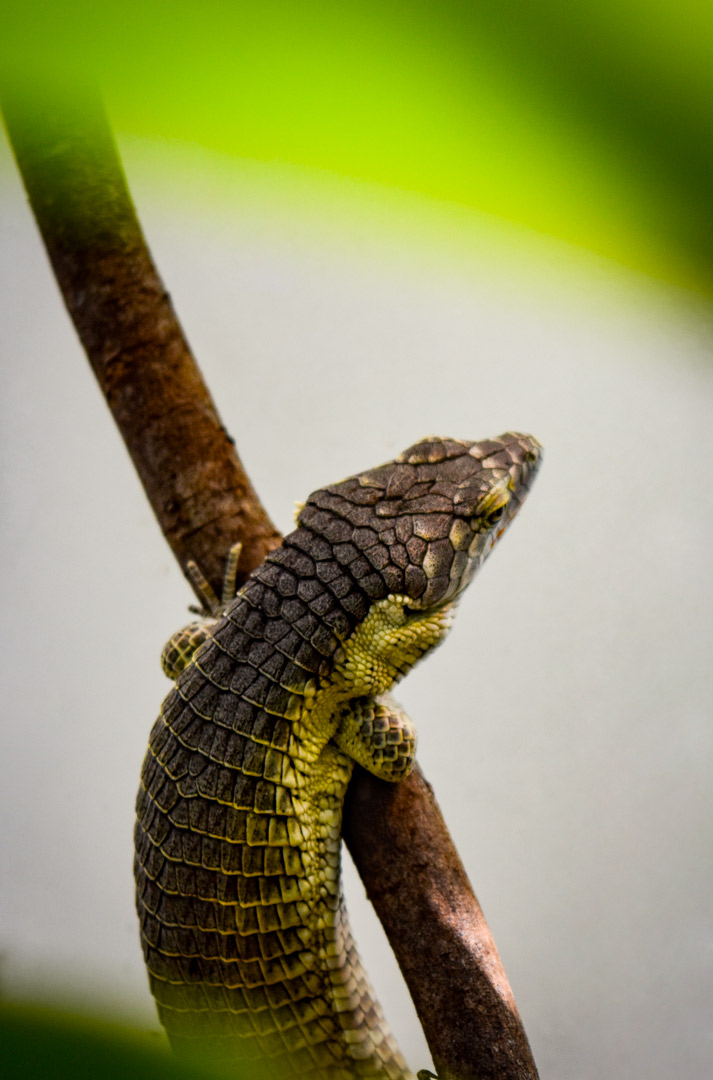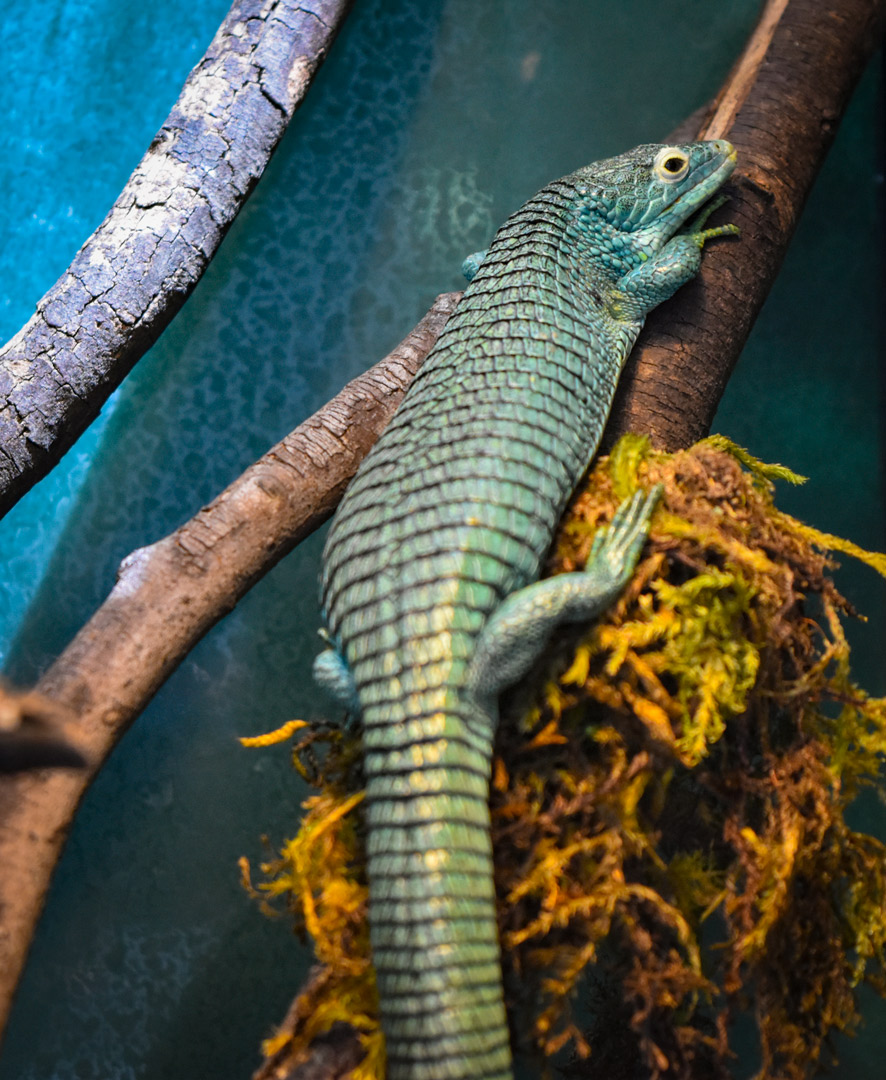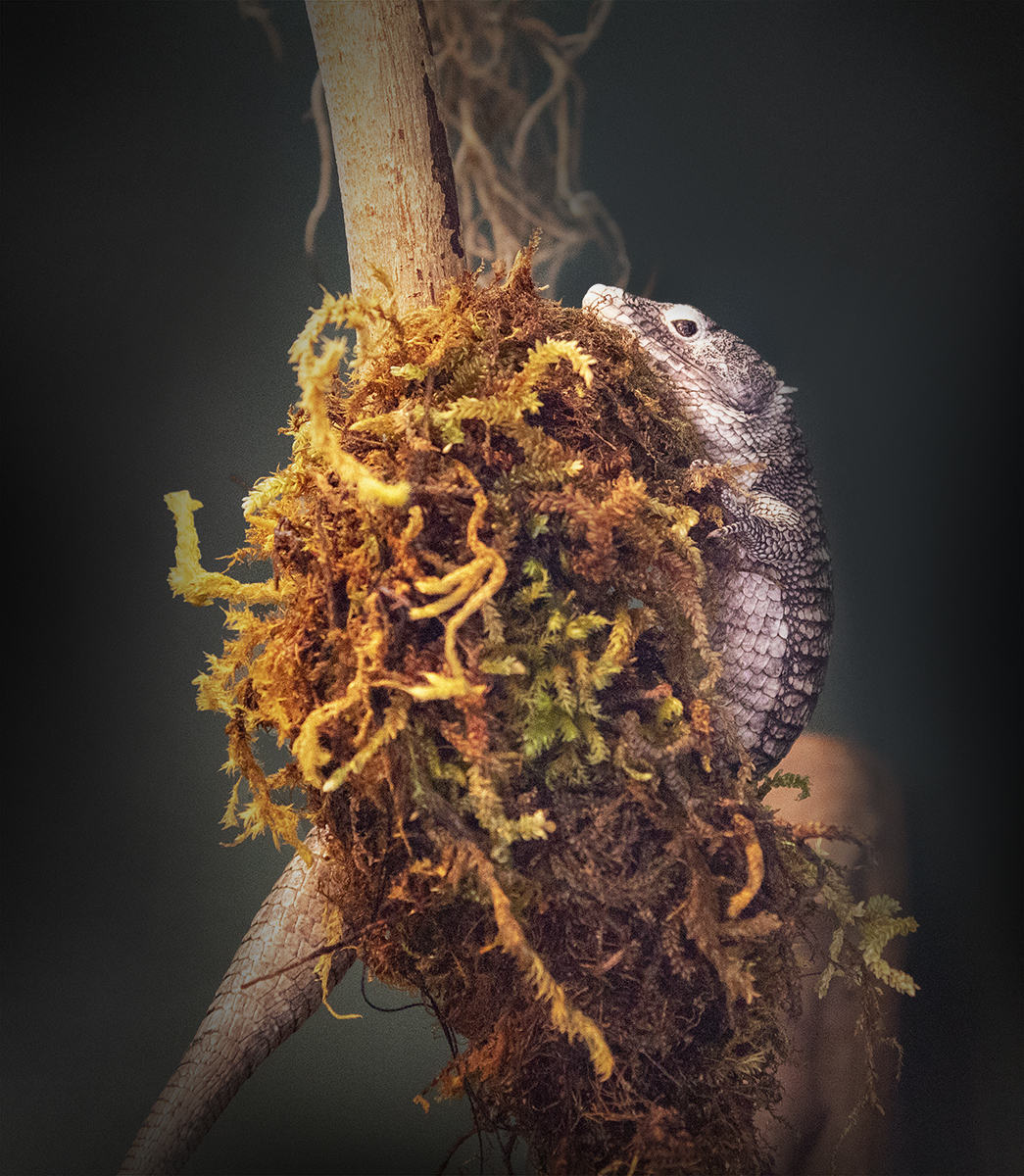Posted by Biologist Mariana Rivas Gálvez on March 15, 2024
Who are the Abronia Lizards?
One of the most fascinating reptiles in the Mesoamerican region are the lizards of the genus Abronia, representing one of the most notable endemic reptiles in the area. These remarkable animals belong to the family “Anguidae”, and some studies suggest their inclusion in the taxonomic group “Toxicofera”, which also includes “helodermatids” (Helodermatidae), “iguanas” (Iguania), and “monitor lizards” (Varanoidea). Their main distribution spans in Mexico and Central America, with Guatemala being a significant distribution point. Approximately 28 to 30 species of these lizards have been identified within this genus, with 12 found in Guatemala alone, at least 8 of which are endemic to the region. Endemic species in this area include A. anzuetoi, A. aurita, A. campbelli, A. fimbriata, A. frosti, A. gaiophantasma, A. meledona, and A. vasconselosii. It is essential to consider that taxonomy, classification, and the number of recorded species may change as more comprehensive research is conducted and new populations are identified.
Abronia. vasconcelosii - “Dragoncito esmeralda” - Photography by PH. Pedro Pablo Ranero - Zoológico La Aurora - Guatemala City - March 5. 2024.
Why are they so special?
Abronia lizards are not only interesting due to their unique distribution in Mesoamerica but also because of their physiological characteristics and habits. Unlike other lizards, these animals have a series of rough scales on the sides of their bodies, distinguishing them from the smooth body scales typically observed. This feature is diagnostic within their family (Anguidae). Furthermore, these lizards exhibit highly distinctive scales with interesting colorations ranging from neutral shades like gray and brown to vivid colors such as green, turquoise, and red. Additionally, some species have a series of scales above the eardrum, giving the appearance that these lizards possess "horns." This, along with their wide heads, slender and delicate bodies, and short limbs, attribute them a particular appearance resembling "dragons" (from fairy tales, fantasy, and fiction), hence one of their common names being "dragon lizards (lagartijas dragón)" or "little dragons (dragoncitos)."
Abronia fimbriata. - “Dragoncito de labios rojos” - Photography by PH. Pedro Pablo Ranero - Zoológico La Aurora - Guatemala City - March 5. 2024.
Where and how can you find the Abronia lizards?
These reptiles do not exhibit habits typical of other lizards found on rocks, logs, caves, leaf litter, or in any terrestrial ecosystem in general. Instead, they have "arboreal" habits, meaning they live high up in trees among branches, bromeliads, and epiphytes. These reptiles can live up to 40 meters above the ground, making it challenging to spot them in the wild as they rarely descend from trees except for sunbathing or exploration. Consequently, these animals possess one of their most emblematic features, their "prehensile tail." Their elongated, prehensile tail functions as a fifth limb, aiding them in moving through tree branches and maintaining balance.
Abronia anzuetoi. - “Dragoncito del Volcán de Agua” - Photography by PH. Pedro Pablo Ranero - Zoológico La Aurora - Guatemala City - March 5. 2024.
The Dragon's Threat is Not a Blue Prince!
These fascinating lizards are severely threatened, with many of their species endangered and/or vulnerable. Much of this is due to ecosystem disturbance, where deforestation, fires, illegal wildlife trade, and the establishment of unsustainable trails or agricultural areas have been the primary threats leading to population decline or endangerment. This is directly related to their specific habits; being highly dependent on their environment, disturbances in their habitat can have serious species- and population-level consequences for this intriguing group of reptiles.
Abronia campbelli. - “Dragoncito de Guatemala Oriental” - Photography by Biologist Mariana Rivas - Zoológico La Aurora - Guatemala City - March 5, 2024.
Conservation of the Abronia genus is a priority due to the numerous threats it faces. In Guatemala, the La Aurora Zoo and the University Del Valle de Guatemala are conducting a conservation project focused on the breeding, care, and reintroduction of these lizards, with a special focus on the 8 endemic species of the region. The main objective is to protect and conserve these species, with the hope that they can eventually be reintegrated into their natural habitats to counteract their population decline. However, before reintroduction, it is crucial to ensure that ecosystem conditions are optimal for their release; otherwise, this project would not achieve its goal. In this regard, it is vital for other projects to focus on conserving the ecosystems of Abronia to ensure that the conservation project for these lizards can achieve its respective objective most effectively. Thus, combined efforts can successfully achieve the conservation objectives sought for the Abronia genus.



























